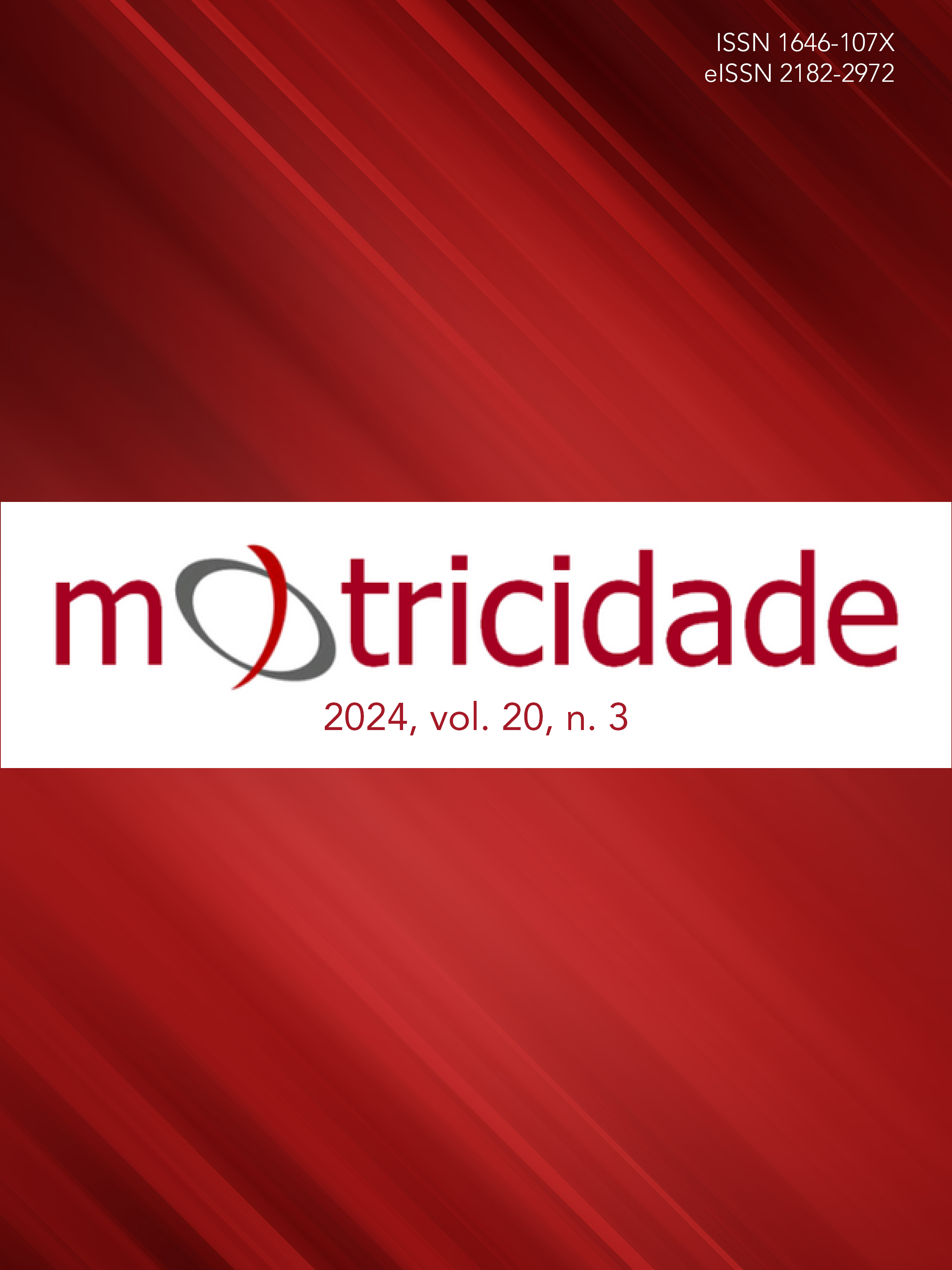O Papel dos Afetos em Modelos de Processamento Duplo e sua Importância Para a Adesão ao Exercício Físico: Uma Revisão da Literatura
DOI:
https://doi.org/10.6063/motricidade.33478Palavras-chave:
hedonismo, afeto, processamento duplo, atividade física, adesãoResumo
O crescimento de teorias comportamentais assentes em mecanismos de processamento duplo reflete uma mudança do paradigma cognitivista-social predominante, procurando um maior reconhecimento dos fatores automáticos/implícitos no estudo do comportamento. A presente revisão narrativa visa providenciar uma maior clareza quanto à definição de afeto, emoção e humor, apresentando de seguida modelos teóricos de processamento duplo que consideram os afetos básicos como aspeto essencial nos processos implícitos e, direta ou indiretamente, nos processos explícitos. Algumas dessas teorias que serão abordadas neste trabalho são: a Teoria Afetiva-Reflexiva da Inatividade Física e do Exercício (ART), a Teoria da Minimização do Esforço na Atividade Física (TEMPA), o Modelo de Adoção e Manutenção da Atividade Física (PAAM), e a Estrutura dos Afetos e do Comportamento Saudável (AHBF). Neste artigo será descrito com detalhe as associações entre os determinantes implícitos (e.g., afeto, hábito) e explícitos (e.g., intenção, traços autorregulatórios) e a prática regular de exercício físico. Sugerimos que a falta de consideração que os fatores associados ao processamento implícito têm sofrido, limitam a compreensão e criação de intervenções que possam promover a adoção e manutenção de um comportamento (e.g., exercício físico) a longo prazo. Por fim, concluímos com uma breve reflexão sobre as ligações entre modelos e possíveis sobreposições, bem como direções futuras de investigação e aplicações práticas.
Downloads
Publicado
Edição
Secção
Licença
Os autores dos manuscritos submetidos para publicação deverão ceder, a título integral e permanente, os direitos de autor (copyright) à revista Motricidade e às Edições Sílabas Didáticas. A cedência de direitos de autor permite a publicação e divulgação do artigo em formato impresso ou eletrónico e entrará em vigor a partir da data de aceitação do manuscrito. Os autores concedem, ainda, os direitos para a revista Motricidade utilizar e explorar o respetivo artigo, nomeadamente para licenciar, ceder ou vender o seu conteúdo a bases de resumos/indexação ou outras entidades.
Nos termos da licença “Creative Commons”, os autores poderão reproduzir um número razoável de exemplares para uso pessoal ou profissional, mas sem fins comerciais. Nos termos da licença SHERPA/RoMEO, os autores poderão, ainda, disponibilizar/arquivar uma cópia digital final (versão postprint) do artigo no seu website ou no repositório científico da sua instituição.


